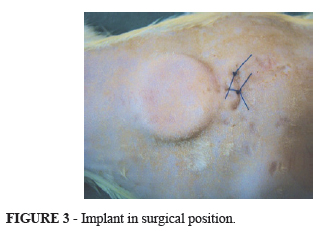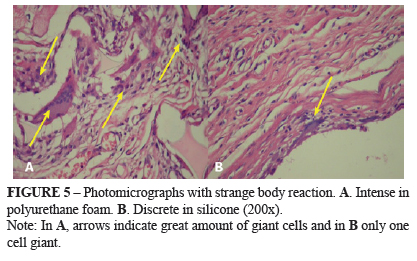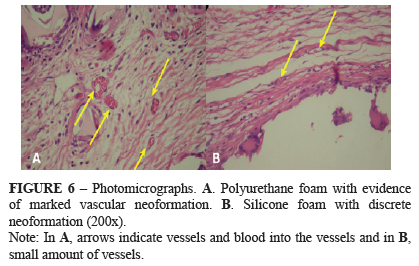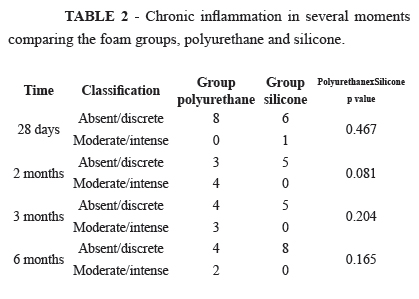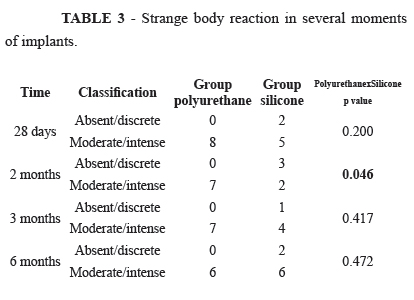PURPOSES: To evaluate whether polyurethane foam leads more intense foreign-body reaction than silicone foam. To compare the vascularization of the capsules surrounding the foam implants. To investigate if the capsule of polyurethane foam implanted has greater amount of collagen than that of silicone foam. METHODS: Sixty-four young male Wistar rats were allocated into two groups: polyurethane foam and silicone foam. Subcutaneous discs were implanted into the dorsum of the animals in both groups. The capsules were assessed 28 days, two months, three months and six months postoperatively. Microscopic analysis with H&E stain was performed to evaluate the acute and chronic inflammatory process, foreign-body reaction and neovascularization. The analysis with picrosirius red was performed using the ImageProPlus software, to measure the number of vessels and collagen types I and III. RESULTS: There were no statistical differences between the two groups regarding the acute and chronic inflammatory processes. All rats from the polyurethane group, in all times, exhibited moderate or intense foreign-body reaction, with statistic significant difference (p=0.046) when compared with the silicone group, in which the reaction was either mild or nonexistent at two months. Vascular proliferation was significantly different between the groups at 28 days (p=0.0002), with the polyurethane group displaying greater neovascularization with H&E stain. Similar results were obtained with picrosirius red, which revealed in the polyurethane group a much greater number of vessels than in the silicone group (p=0.001). The collagen area was larger in the polyurethane group, significantly at 28 days (p=0.001) and at two months (p=0.030). CONCLUSIONS: Polyurethane foam elicited more intense foreign-body reaction when compared with silicone foam. The number of vessels was higher in the capsules of the polyurethane foam implants 28 days after the operation. The capsule of the polyurethane foam implants showed a greater amount of collagen than that of the silicone foam implants.
Prostheses and Implants; Polyurethanes; Silicones; Rats



